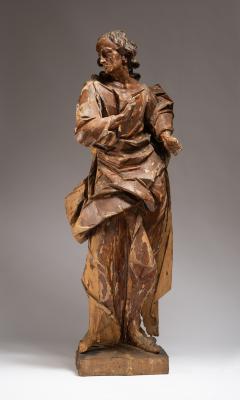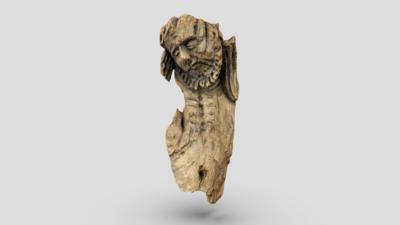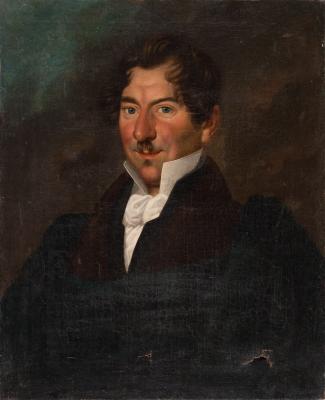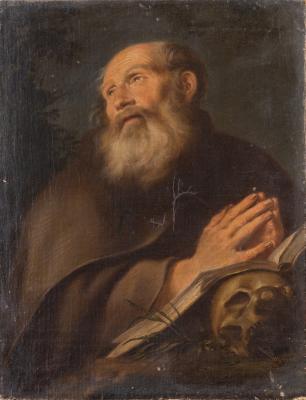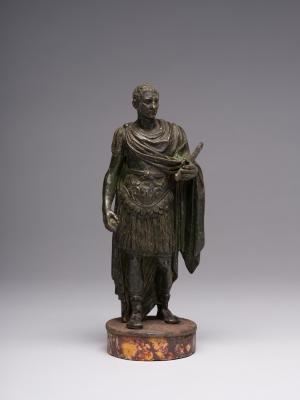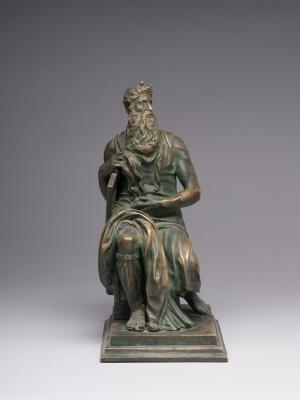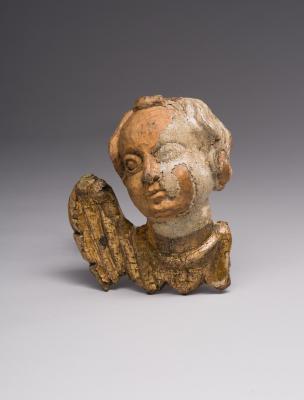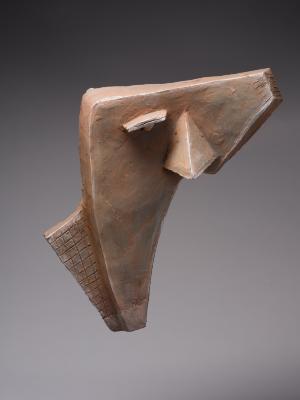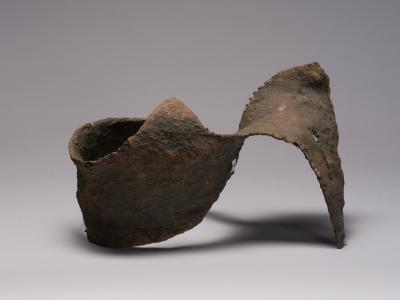Adam Sieniawski (? –1726) – castellan of Krakow and a Crown Hetman. This portrait of Adam Sieniawski was painted in the traditions of the provincial genre, dominant in Ukrainian painting of the 18th century. The figure of the hetman is depicted in a conventional oval on a dark background, with the inscription on the right: "Adam Nikolay Sieniawski Kasztelan Krakowski. Hetman W. Kor. A.D.1720". The figure is depicted in a pose characteristic of a parade-representative portrait: a man turned three-quarters to the right, dressed in knight's armour, with a blue ribbon of the Order of the White Eagle, in his right hand a Hetman's mace. The portrait features a rich colour scheme, dominated by the red cloak over Adam Sieniawski's shoulders. The provincial painter's manner is characterised by detailed facial features: high, fashionably shaved forehead, black arches of eyebrows, prominent moustache, tightly pressed lips, and a massive chin. The portrait is a vivid example of a local painting of the first half of the 18th century, which tried to imitate European painting.








